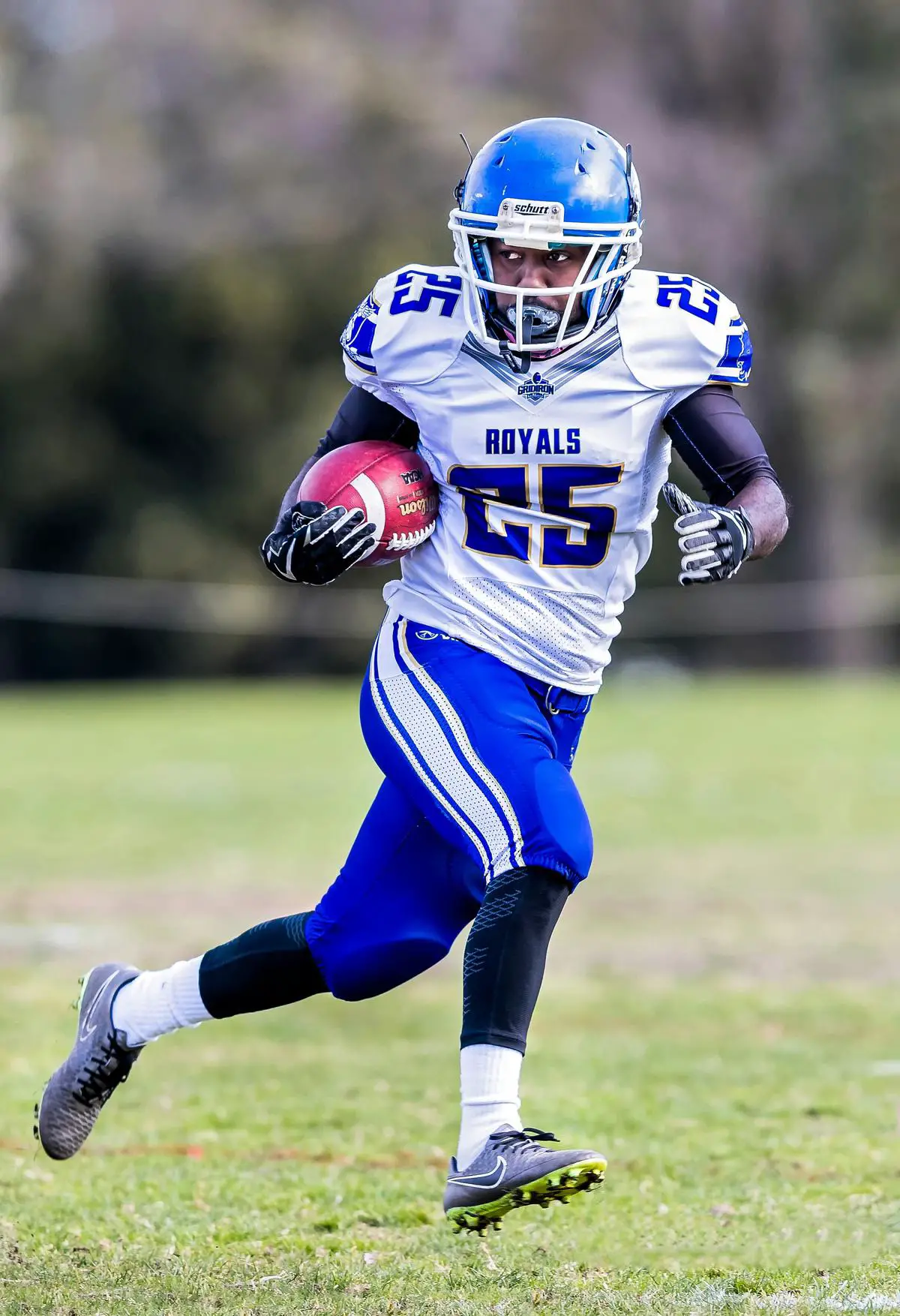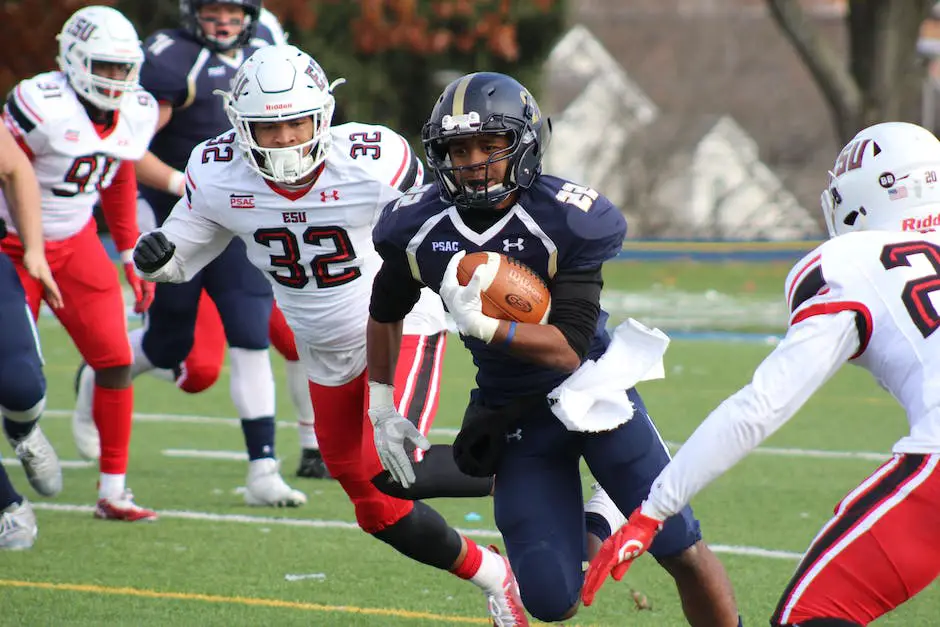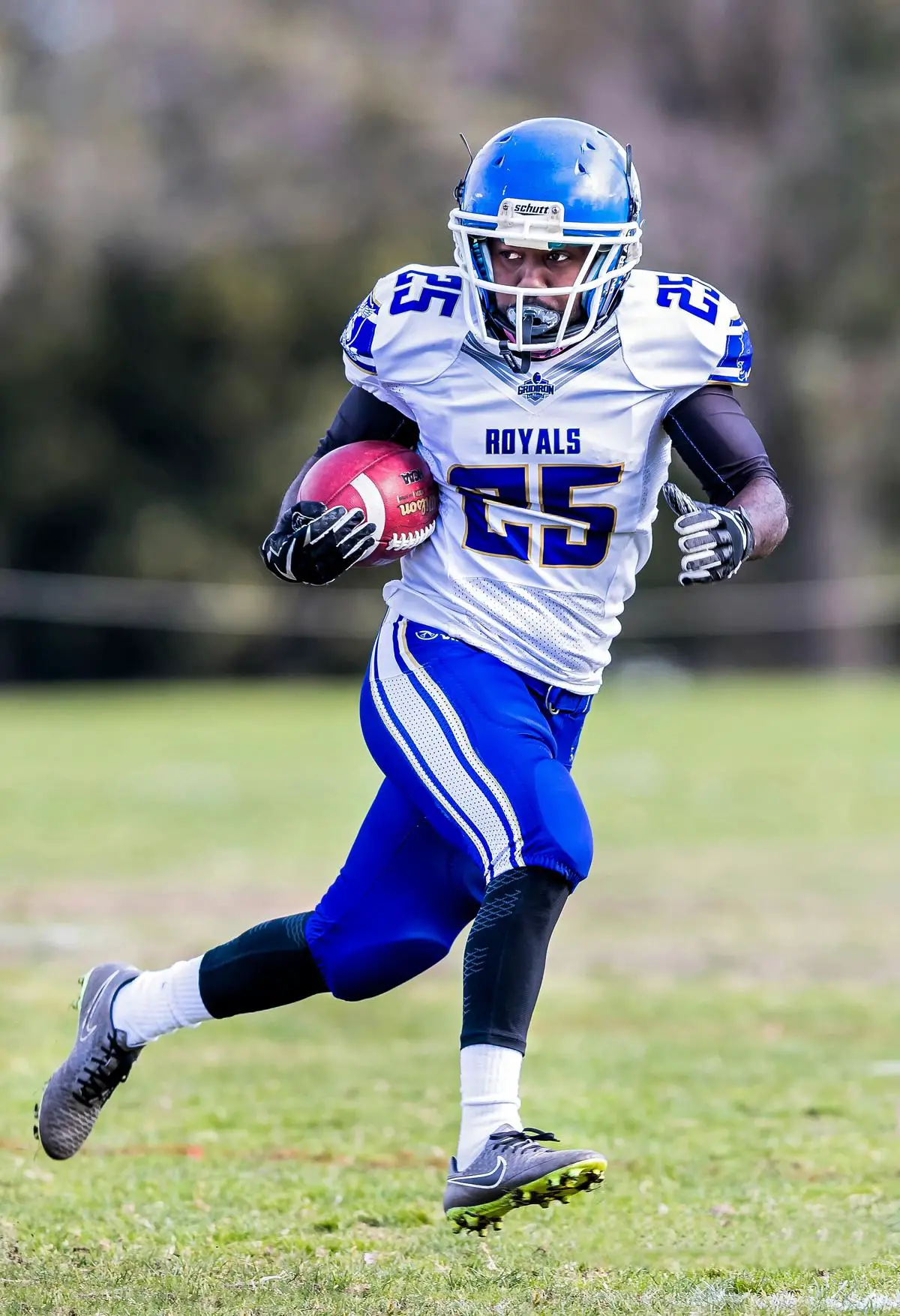Master Football Offensive Tactics: Strategies & Tips
Football, a beloved American pastime, showcases talent and strategy on both sides of the field. One essential aspect that often determines a team’s success is its mastery of offensive tactics. From the carefully designed formations to the intricate dance of the passing game, effective offenses keep their opponents guessing and create opportunities for explosive plays. This discussion delves into the various aspects of football offensive tactics, shedding light on the complexities and nuances of this thrilling game.
Formation Basics
Single-Back Formation
One common football offensive formation is the single-back formation. In this formation, there is only one running back, usually lined up directly behind the quarterback. The single-back formation often features multiple wide receivers and sometimes includes one or two tight ends as well. This formation focuses on the passing game and allows for more downfield options for the quarterback. It also relies on the single running back to be versatile in both the running and passing game, as the running back is expected to not only carry the ball but also to block and potentially act as a receiver downfield.
I-Formation
Another popular football offensive formation is the I-formation. In this formation, the quarterback lines up directly behind the center with two running backs lined up behind him, forming a straight line (hence the name “I”). The I-formation typically includes two wide receivers and one tight end. This formation emphasizes a strong running game, as it provides a lead blocker in the form of the fullback, who lines up in front of the tailback. The lead blocker is able to clear the way for the tailback, who is responsible for carrying the ball downfield. With fewer receiving options, this formation relies on the wide receivers and tight end to get open quickly, allowing the quarterback to complete shorter, quicker passes.
Shotgun Formation
The shotgun formation is another commonly used football offensive formation. In this formation, the quarterback lines up several yards behind the center, with one running back typically positioned next to him. The shotgun formation features more wide receivers and tight ends, varying from two to four wide receivers, and sometimes utilizing multiple tight ends. This formation is designed for passing plays and allows the quarterback more time to survey the field, as he is further back from the line of scrimmage. The running back in the shotgun formation is again expected to be versatile, capable of running, blocking, and receiving.
Spread Formation
The spread formation is a more recent innovation in football offensive tactics and focuses on spreading the defense out across the field by utilizing multiple wide receivers and tight ends. The quarterback typically lines up in the shotgun position in this formation, with the running back either next to him or directly behind him. With the additional wide receivers, the spread formation puts pressure on the defense to account for multiple potential pass catchers, giving the quarterback more options downfield. This formation also opens up running lanes for both the running back and the quarterback, as the defense is often forced to spread out to cover the wide receivers.
Player Roles
Understanding the roles of various players in different football formations is crucial for utilizing offensive tactics effectively. Offensive linemen, for example, are tasked with protecting the quarterback and creating running lanes for the running back. Proficiency in pass blocking is essential when implementing formations that emphasize the passing game, such as the shotgun and spread formations. This allows the quarterback ample time in the pocket. On the other hand, in formations focused on the running game, like the I-formation, offensive linemen need to excel at run blocking, enabling them to push defenders away from the line of scrimmage and create space for the running back. A football team’s offensive success heavily relies on the proper understanding and execution of these various formations and player roles.

Running Game Tactics
One significant aspect of football offensive tactics connected to player roles is the running game. A well-executed running game sets the pace and keeps the opposing defense off-balance. It consists of various strategies, such as inside runs, outside runs, zone versus power schemes, and employing misdirection. Each tactic aims to exploit defensive weaknesses, opening up lanes for ball carriers, and bringing the team’s offensive capabilities to the forefront. Thorough comprehension of player roles and their responsibilities within these strategies is essential for a smooth, efficient offensive performance.
Inside and Outside Runs
Inside runs and outside runs form the foundation of any running game. Inside runs are designed to attack the heart of the defense by driving the ball carrier through the gaps between the offensive line. Inside runs typically involve the ball carrier running between the guard and the offensive tackle, with the offensive line attempting to push the defensive line backward to create space. Outside runs, on the other hand, aim to stretch the defense horizontally by forcing the action towards the sideline. These plays often involve the ball carrier hitting the edges of the offensive line, utilizing their speed to turn the corner and find open space.
Zone and Power Schemes
Zone and power schemes offer unique approaches to blocking and running the football. Zone schemes require the offensive linemen to move in unison and create a series of running lanes, or “zones,” for the running back to exploit. Offensive linemen in zone schemes often prioritize mobility, as their success hinges on their ability to reach the second level of the defense and block linebackers. Power schemes, conversely, emphasize the physicality and strength of the offensive line, with linemen focused on moving defenders out of assigned gaps to create running lanes. Power schemes often utilize pulling linemen and lead-blocking fullbacks or tight ends to bolster the point of attack.
Misdirection
Misdirection is another element employed in various rushing strategies to confuse and manipulate defenses. By utilizing pre-snap motion and fake handoffs, offenses can force defenses to commit to one direction, only to execute a play in the opposite direction. Misdirection plays such as counter runs, reverses, and play-action passes can catch the defense off-guard, exploiting their aggression and creating opportunities for big gains on the ground or through the air.
The Importance of the Offensive Line
The offensive line plays a vital role in the success of any football team’s offensive tactics. Their main responsibility is to create space and open lanes for ball carriers, ultimately determining the outcome of a game. To achieve this, the offensive line must work cohesively, understanding their blocking assignments and executing them with precision. Regardless of the rushing strategy employed, the overall performance of the offensive line is essential for a successful ground game, which in turn complements the passing game, leading to a well-rounded, effective offensive strategy.

Photo by johntorcasio on Unsplash
Passing Game Tactics
Football Offensive Tactics: Passing Game
In addition to a strong ground game, the passing game is a key component of football’s offensive tactics. A variety of short and long passing concepts allow teams to exploit weaknesses in the opponent’s defense. Short passing plays, such as screen passes, slants, and quick outs, offer the quarterback quick, high-percentage throws that can gain positive yardage. These plays are especially effective against aggressive defenses relying on pass rushes or blitzing linebackers. By utilizing short passes, an offense can neutralize the opponent’s pass rush, deter blitzes, and spread out the defense horizontally. This approach opens up both running and passing lanes, enabling teams to create diverse and efficient offensive tactics for success on the field.
Intermediate Passing Concepts
Intermediate passing concepts involve combinations of routes that work together to stretch the defense both vertically and horizontally. For example, a popular intermediate passing concept is the “levels” concept, which uses layered routes to exploit gaps in zone coverages. The quarterback must read the defense’s safeties, linebackers, and cornerbacks to determine where the soft spots in coverage are. The offensive coordinator and quarterback will adjust route combinations and play calls based on how the defense is aligned – whether that be man-to-man, zone, or some combination of both.
Deep Passing Concepts
Deep passing concepts in a football offensive game plan focus on attacking the defense with long and vertical routes down the field. These plays require a high level of timing, precision, and confidence between the quarterback and wide receivers. Common deep passing routes include the go route (or “fly” route), post, and corner. To be effective, deep passing plays often require strong pass protection by the offensive line, allowing the quarterback time to read the defense and throw accurate passes. Play-action passes, where the quarterback fakes a handoff to the runner, can draw the linebackers and safeties closer to the line of scrimmage, creating opportunities for deep routes to open up downfield.
Attacking Different Defensive Coverages
Attacking different defensive coverages requires understanding the strengths and weaknesses of each coverage and crafting a passing offense that can exploit them. For example, when facing a zone defense, pass-catchers (such as wide receivers, tight ends, and running backs) should aim to find open spaces between the defenders for easy completions. Against man coverage, offensive players must win their individual matchups through clever route running and athletic ability. Some passing offenses, like the West Coast Offense introduced by Bill Walsh, emphasize short, quick throws that focus on gaining yards after the catch.
Quarterback Reads
Quarterback reads are a critical aspect of passing game tactics in football, as they directly impact successful completion of plays or potential turnovers. The quarterback is responsible for reading the positioning of defenders before the snap and reacting to their movements after the snap. Some passing plays require a “pre-snap” read, where the quarterback determines what coverage the defense is employing, and makes an initial decision as to where he will throw the ball. After the snap, the quarterback must quickly process how defenders react to the play and adjust accordingly. The knowledge, anticipation, and decision-making skills of a quarterback can make or break a passing offense.

Play-Action Concepts
Understanding Play-Action Passing Concepts in Football
Play-action passing concepts form a vital part of a potent football offensive strategy. In these tactics, the quarterback pretends to hand off the ball to a running back before stepping back to pass, tricking the defense into believing it’s a running play. When executed effectively, play-action passes can lead to explosive plays downfield by taking advantage of aggressive defenses and creating mismatches within the defensive secondary.
Benefits of Play-Action Techniques
- Exploiting Run-Focused Defenses: Defenses that prioritize stopping the run are especially vulnerable to play-action concepts. As the linebackers and safeties fall for the fake handoff, they leave coverage gaps downfield that can be exploited by receivers.
- Offering More Protection for the Quarterback: By faking a handoff, the quarterback diverts the defense’s attention, allowing the offensive line extra time to set up and establish their pass protection. Since the defense focuses on halting the run, they are less likely to blitz, which means fewer defenders are rushing the quarterback.
- Retaining Unpredictability: Incorporating play-action into an offense’s game plan aids in maintaining unpredictability, keeping defenses guessing throughout the game. This unpredictability can also cause hesitation among defenders, giving the offense an edge in timing and execution.
- Universal Compatibility: Play-action concepts are beneficial because they can be incorporated into various offensive schemes, irrespective of player roles. Play-action concepts can be adapted to fit the skillset of the quarterback, running back, and wide receivers, whether an offense operates primarily from a spread formation or a more traditional pro-style set.

Screen Passes & Trick Plays
Football Tactics: Screen Passes and Trick Plays
Screen passes are another essential part of an effective offensive strategy in football. These plays aim to create confusion among defenders, making them think a downfield pass or run is in progress. Instead, the quarterback steps back and throws a short, high-percentage pass to a receiver, usually a running back or wide receiver, who is positioned behind a wall of blockers. The goal is to draw defensive linemen and linebackers up the field, away from the intended receiver, and then use the blockers’ positioning to gain yards after the catch. Screen passes work particularly well against aggressive defenses that frequently blitz or rush the passer. Building on the play-action principles previously discussed, incorporating screen passes and trick plays creates a well-rounded offensive strategy that keeps the opposing defense on its heels.
Trick Plays
Trick plays, such as the reverse, add an element of surprise to an offense’s game plan. The reverse is a misdirection play that involves handing the ball off to a running back moving in one direction, who then hands the ball off to a teammate coming from the opposite direction. The goal is to deceive the defense by making them think the play is going one way when it is actually going another. When executed correctly, a reverse play can result in significant gains, as the defense’s pursuit towards the initial ball carrier can leave them out of position downfield.
In addition to the reverse, there are numerous other trick plays that can create confusion and mismatches in a defense. Some examples include flea-flickers, double passes, and fake punts. The flea-flicker is a combination of a hand-off and a pass, where the quarterback hands the ball off to a running back before receiving the ball back on a pitch to throw downfield. The double pass involves a lateral pass to a player who then throws a forward pass to another receiver. Fake punts are used on fourth down situations, where the punting team simulates a punt but instead executes a passing or running play to catch the defense off guard and gain a first down.
Although trick plays can be highly effective, they can also be high risk and are often dependent on perfect execution. Teams must ensure they have the necessary personnel, preparation, and timing to successfully pull off these unconventional plays. Frequent use of trick plays may also tip off the defense, causing them to be more cautious and potentially reducing the element of surprise.
Strategy
In order to effectively employ screen passes and trick plays, teams must strategically incorporate these tactics into their game plan while avoiding predictability. Offensive coordinators should use such approaches to exploit specific weaknesses in the opposing defense, such as overzealous pass rushers or undisciplined cornerbacks. Continuously varying the offensive strategy and keeping opponents guessing allows a team to control the tempo of the game, ultimately improving their chances of success on the football field.

Tempo & Adjustments
Tempo and In-Game Adjustments in Football Offense
One way to keep a defense on its toes is managing tempo, often regarded as the speed at which a football team operates its offense. Teams that consistently control tempo can dictate the pace of the game and force defenses to adapt or suffer the consequences. A tactic that incorporates fast-paced tempo is the no-huddle offense, in which the team quickly moves to the line of scrimmage and runs plays without huddling. This approach leaves the defense with little time to regroup or substitute players, wearing them down both physically and mentally. As a result, the offense creates opportunities for big plays and scoring chances.
In-Game Adjustments
In-game adjustments are another key aspect of football offensive tactics. Successful teams must be able to make quick and effective changes to their game plan based on how their opponents are playing. These adjustments can include altering play-calling, changing formations or personnel packages, and exploiting mismatches or weaknesses in the defense. The ability to make these in-game adjustments on the fly allows offenses to stay ahead of their opponent’s defensive schemes and maintain their edge throughout the game.
Pre-Snap Motion and Shifts
One method of exploiting schematic tendencies in defenses is to use pre-snap motion and shifts. By moving offensive players around before the snap of the ball, the offense can force the defense to reveal their coverage or blitz plans, allowing the quarterback to make better choices when deciding where to throw the ball. Additionally, these pre-snap movements can create confusion among defenders, potentially leading to blown assignments and open receivers downfield.
Switching Tempos
Switching between various tempos during a game can further augment an offense’s effectiveness. By alternating between a fast-paced no-huddle attack and a slower, more deliberate approach, the offense can keep the defense off-balance and guessing. This constant change in tempo can lead to defensive players feeling fatigued or struggling to maintain focus. Moreover, by giving the defense less time to prepare and leaving them unsure of what is coming next, offenses can exploit favorable matchups while minimizing the risk of negative plays.
Time of Possession
One essential aspect of football offensive tactics is managing the tempo and making in-game adjustments to control the time of possession. Keeping the opposing defense on the field for extended periods can lead to increased fatigue, resulting in more missed tackles and blown assignments. Furthermore, maintaining possession limits the opposing team’s offensive opportunities, as their players are left waiting on the sideline. Thus, by managing the tempo and making strategic adjustments, football offenses can take control of the game’s pace and enhance their chances of success.

Photo by johntorcasio on Unsplash
Red Zone Offense
Red Zone in Football
The red zone in football, defined as the area between the 20-yard line and the opponent’s end zone, is a key aspect of offensive strategy. Since entering the red zone signifies that a team is in excellent scoring position, offenses must execute efficiently to increase their chances of scoring a touchdown, rather than settling for a field goal.
Incorporating the strategies discussed in managing time of possession is integral to success within the red zone. Focusing on the importance of tight ends, running backs, and effective execution becomes even more crucial in the condensed space of the red zone, where defenses are more determined to stop the passing game. By connecting the offensive tactics of time of possession and red zone strategies, teams can coordinate to dominate both crucial elements of the game and increase their opportunities for victory.
Tight Ends in the Red Zone
One key aspect of red zone offense is the increased usage of tight ends in the passing game. The size and strength of tight ends allow them to be effective targets, particularly in the confined space of the red zone.
Quarterbacks often look for matchups against smaller linebackers or defensive backs, as the tight end can use their size advantage in these situations. Additionally, tight ends can be utilized as effective blockers in running plays, giving the offense a level of versatility that is essential in the red zone.
Running Backs in the Red Zone
Running backs play a crucial role in red zone offense as well. While they may be primarily thought of as rushers, many running backs are called upon to serve as pass catchers in the red zone.
This can be accomplished through designed screen passes or short routes where the running back acts as a safety valve for the quarterback. Running backs can also be utilized as decoys, drawing attention away from the primary receivers and creating opportunities for other players to emerge as targets.
Offensive Play Calling in the Red Zone
Offensive play calling in the red zone is designed to maximize the potential for scoring while minimizing mistakes.
This often requires a delicate balance of running plays and passing plays, ensuring the defense remains off balance and cannot focus solely on stopping one aspect of the offense. Coaches may choose to call plays that are quicker and simpler to execute, reducing the possibility of turnovers or lost yards. This often involves using short, high-percentage throws and a mix of zone and gap running schemes.
Conclusion
Red zone offense is an essential aspect of football offensive tactics that requires careful planning and execution from the coaching staff and players alike. By utilizing the unique skill sets of tight ends, running backs, and efficient execution, teams can increase their chances of scoring touchdowns and securing victories.
As the competition becomes increasingly fierce and the margin for error grows even smaller, success in the red zone can often be the difference between victory and defeat for a football team.

Having explored the many facets of football offensive tactics, it becomes evident that teams need a deep understanding of formations, play types, and strategic adjustments to excel in this competitive arena. By embracing a diverse playbook that encompasses a range of concepts and by leveraging the unique skills of each player, teams can confidently confront any defensive challenge. As fans and aspiring tacticians, a deeper appreciation of the intricacies of football adds a rich layer of excitement and engagement to this already dynamic and gripping sport.
